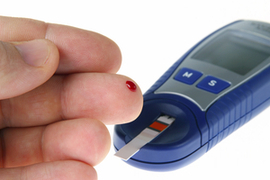Amputation is the surgical removal of all or part of an extremity. The most common amputation surgery is above or below the knee. The indications for leg amputation include severe trauma, significant tumor in the bone or muscle, lack of blood circulation due to peripheral arterial disease, worsening or uncontrollable infection, failed management of acute compartment syndrome, failed management of Charcot’s degenerative osteoarthropathy, or debilitating extremity paralysis from infection or pressure-related complications. Failute to timely diagnose and treat infection, tumor, pressure sores, vascular disease, compartment syndrome, and Charcot’s all may result in the unneccessary amputation of a leg and give rise to allegations of medical malpractice against negligent health care practitioners.

The amputation procedure varies depending on the extremity undergoing the operation. To determine the operation site and the amount of tissue to remove, the surgeon relies on the following factors: the patient’s pulse, skin temperature, areas of reddened skin, and sensitivity to touch in the affected extremity. The presence of a palpable pulse proximal to the level of amputation is a positive predictor for successful healing; however, the absence of a pulse does not necessarily reflect future wound healing failure. The level of the amputation is based on the extent of the damaged tissue, the healing potential of the area, and the rehabilitation potential of the patient. In addition to a thorough clinical examination, objective tests such as ankle pressures, toe pressures, transcutaneous oxygen measurements, and skin perfusion pressures are useful.
The preoperative evaluation and preparation involves medical risk assessment, nutrition assessment, prosthetic and rehab consultation, and possibly a psychological consultation. The diseased tissue is removed along with any crushed bone and the maximal amount of healthy tissue is left behind. The blood vessels and nerves in the surrounding area are sealed off. Following the amputation, the site can be left open due the possibility of further amputation or covered with skin flaps and closed. The remaining muscles in the area are shaped so the end of the limb can be fitted for prosthesis, also known as an artificial limb.
Thromboprophylaxis is recommended for all patients undergoing major lower extremity amputation because patients are at high risk for thromboembolism, the blocking of a blood vessel by a particle that has separated from a blood clot at the formation site. Antibiotic prophylaxis is typically recommended within one hour of skin incision for lower extremity amputation due to high risk for surgical site infection.
Generally, the patient undergoes physical rehabilitation soon after surgery and practice with the prosthesis can begin 10-14 days after surgery. The patient’s postoperative outcome is dependent upon preoperative functional status, comorbidities, and the level of amputation. Wound healing must be monitored and dressing changes performed. Patients with advanced diabetes, significant heart disease, or serious infection are at a greater risk of complications from the procedure. Possible complications include infection, joint contracture, necrosis, deep vein thrombosis, pulmonary embolism, hematoma, and wound opening. In addition, patients may experience phantom pain, a sense of pain in the amputated limb described as burning aching, or electric. Other causes of pain such as ischemia, infection, neuroma, or pressure related wounds should be excluded before determining the diagnosis as phantom pain.



